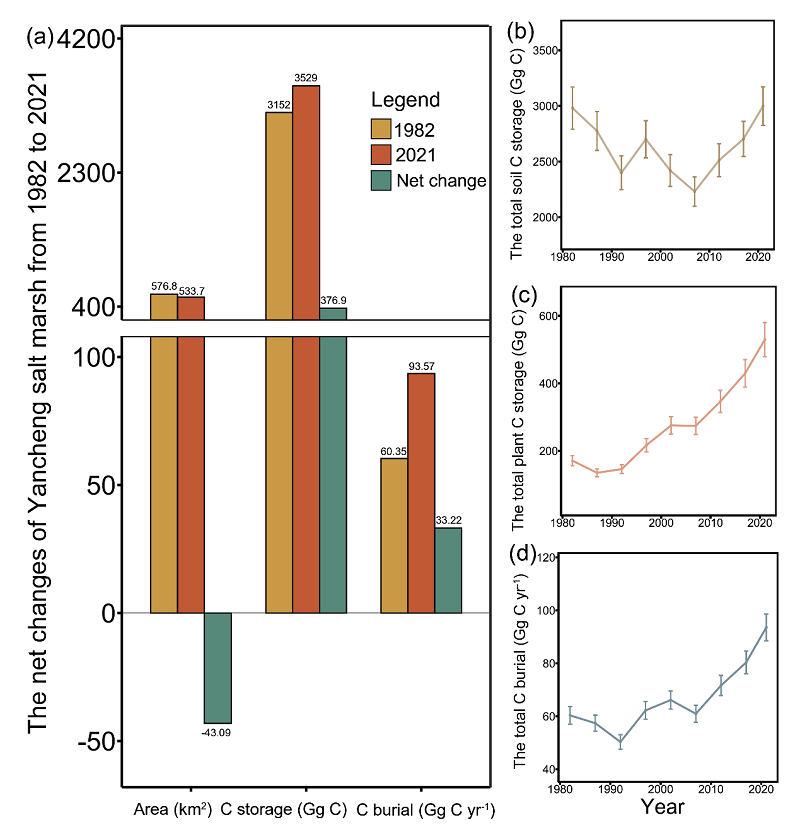

Saltmarsh is a major contributor to global blue carbon (C) sink. However, plant invasion and anthropic activities have greatly altered its distribution and its blue C function in the last decades. We used remote sensing and data synthesis to investigate how the four decades of plant invasion and land reclamation affect the spatiotemporal variation of blue C in Yancheng saltmarshes, the largest coastal ecosystem in eastern China. We revealed that the invasion of exotic cordgrass, Spartina alterniflora, greatly increased the regional blue C storage, mainly by the seaward expansion of cordgrass in mudflats and its high ecosystem C stock. The iconic Suaeda salsa “Red Beach” marshes shrank by 90%, mainly due to reed occupation by the native reed, Phragmites australis. Phragmites australis marsh area was greatly occupied by reclamation, but well offset by its intrusion into Suaeda salsa. The blue C gain by cordgrass invasion overcompensated C loss due to land reclamation and the loss of “Red Beach”. Our findings highlight that coastal blue C is greatly regulated by vegetation coverage, and the seaward cordgrass invasion can benefit the saltmarsh C sequestration. Such a similar process may apply in other regions of the world, with potentially large implications for blue C sinks. For the detailed information, please see https://doi.org/10.1007/s44246-023-00070-4



